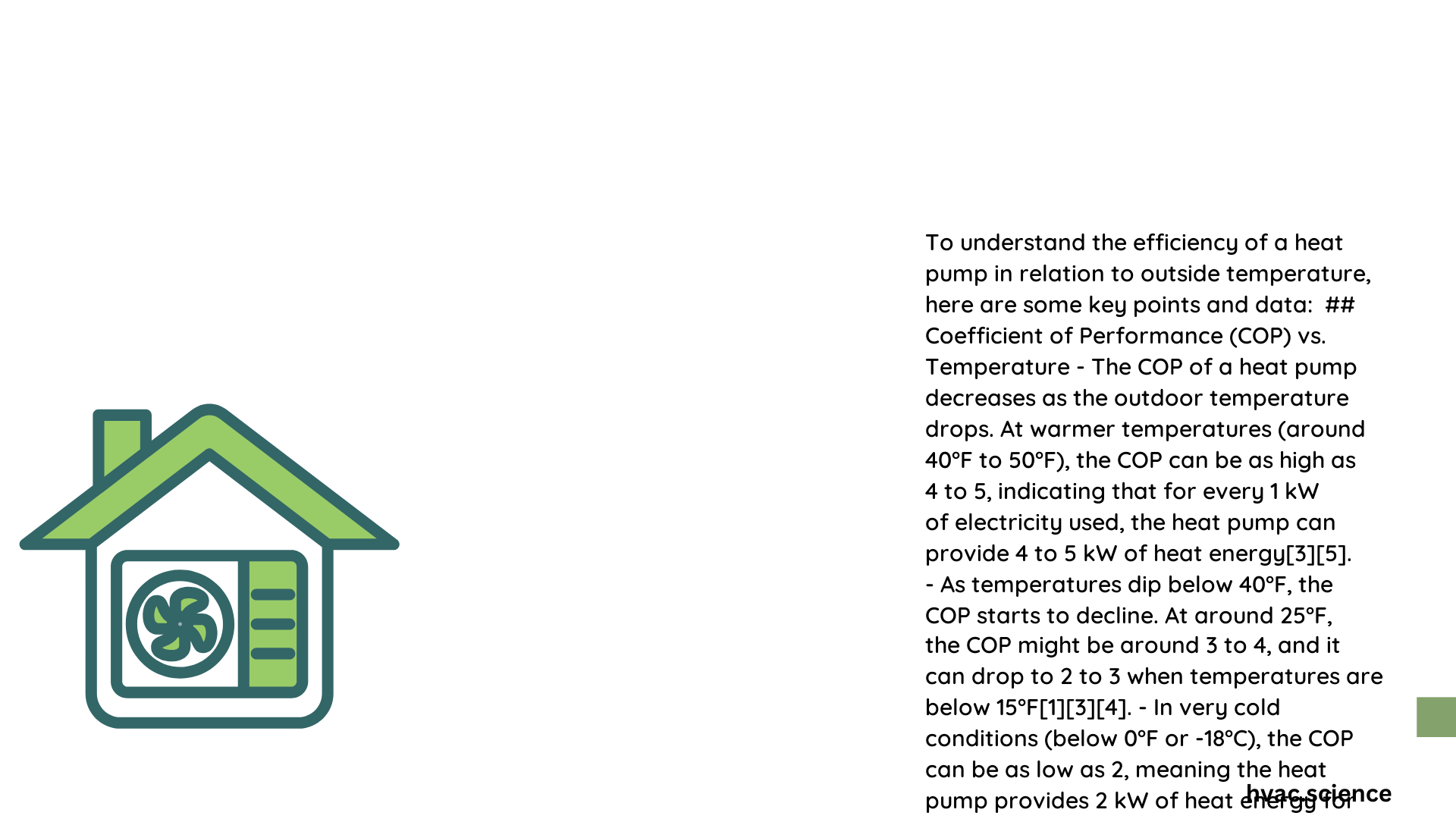Heat pump efficiency dramatically transforms with external temperature variations, creating a complex performance curve that reveals critical insights into thermal energy transfer. The relationship between outside temperature and heat pump coefficient of performance (COP) demonstrates a non-linear efficiency pattern, where temperature differentials significantly influence energy conversion capabilities across different climatic conditions.
What Determines Heat Pump Efficiency Across Temperature Ranges?
Performance Characteristics at Different Temperature Zones
High-Temperature Performance (10°C to 30°C)
- Optimal Efficiency Zone
- COP ranges between 4 to 5
- Minimal energy consumption
- Maximum heat transfer efficiency
| Temperature Range | Coefficient of Performance (COP) | Energy Efficiency |
|---|---|---|
| 10°C – 30°C | 4 – 5 | Extremely High |
| 0°C – 10°C | 2 – 3 | Moderate |
| -10°C to -30°C | 1 – 2 | Low |
Moderate Temperature Performance (0°C to 10°C)
- Gradual efficiency decline begins
- COP starts reducing from 3 to 2
- Increased energy requirements for heat transfer
How Does Temperature Impact Heat Pump Operational Efficiency?
Key Efficiency Factors
- Temperature Differential
- Larger gaps between indoor and outdoor temperatures reduce efficiency
-
Increased energy needed to maintain desired thermal conditions
-
Refrigerant Performance
- Lower temperatures restrict refrigerant phase transition
- Reduced heat absorption and transfer capabilities
Strategies for Maintaining Efficiency in Extreme Temperatures
Low-Temperature Adaptation Techniques
- Advanced Refrigerant Formulations
- Specialized low-temperature refrigerant blends
-
Enhanced heat transfer properties
-
Supplemental Heating Systems
- Integrated electric resistance heaters
- Hybrid heat pump configurations
Quantitative Performance Analysis
Efficiency Metrics Breakdown
- Seasonal Performance Factor (SPF)
- Measures annual heat pump efficiency
- Accounts for temperature variations
- Typical SPF ranges: 2.5 – 4.0
Real-World Performance Data
- Low-Temperature Heat Pump Study Insights:
- Maintained COP > 2.0 at -30°F
- Seasonal COP: 3.29 and 2.68 across two winters
Technical Considerations for Optimal Performance
Design Recommendations
- Select heat pumps with:
- Wide operational temperature range
- High-efficiency compressors
- Advanced heat exchanger technologies
Emerging Technologies and Future Developments
Innovation Trends
- Inverter-Driven Compressors
- Dynamic efficiency adjustment
-
Improved part-load performance
-
Smart Control Systems
- Predictive temperature compensation
- Real-time efficiency optimization
Conclusion

Understanding the heat pump efficiency outside temperature graph requires comprehensive analysis of multiple interconnected factors. Temperature remains the most critical variable influencing performance, necessitating sophisticated engineering solutions to maximize thermal energy transfer across diverse environmental conditions.
